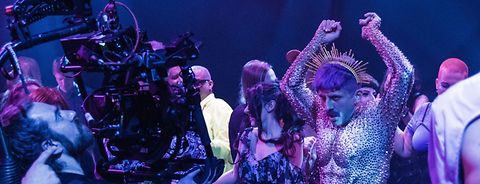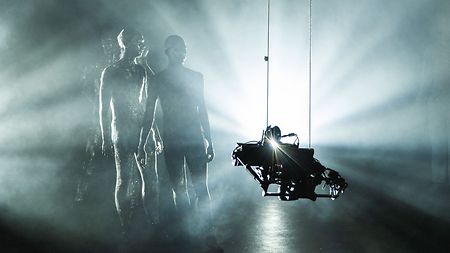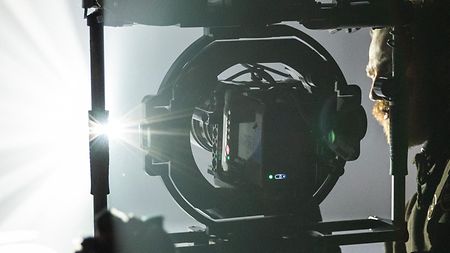You and Steffen Wick have talents in many different areas. What do you have in common and where do you differ?
We have in common that we both always think big. As soon as factors like cost and technology come into play, you have to cut back, of course. But first and foremost, no idea is too big for either of us. Steffen is someone who likes to be creative and to ignore technical issues. He sticks to his ideas, and I try to find solutions for how to implement those ideas. In the end, it always comes down to a balancing act or a compromise. It's been a very good collaboration so far.
What inspires you?
That's a big question. Live music is very fascinating, but I am also fascinated and inspired by music videos. For me, it's a form that combines image and sound in the best possible way. I like to be part of an artistic process. For my work as a cinematographer and image designer, I am also inspired by stories from other filmmakers. I like old making-of’s from film sets of the Eighties or Nineties. I like how the collaborators had to improvise in order to implement certain ideas and effects, and how that came across credibly on screen. The images are forever recorded in film history, and 20 years later you find out that it was all improvised. I think that's cool. Also, in film, you often have "adventures" with people you don't know until you get to the set.
How did you decide to collaborate on this project?
A German directing duo that does a lot of commercials used to refer jobs to me when I was younger. They recommended me to Steffen. In 2021 we shot our first music video, for his song "Migrant Bird." During postproduction, he sent me his next song "Particles" and asked if I would like to shoot the music video. I loved the song. When someone has confidence in your work and asks you to work with him again – that's a great affirmation.
Did Steffen have a clear concept of how to realize the project?
Our first project we developed in parallel. With the new project, Steffen had precise ideas about what the music video should look like and how the sequences could be. For example, he had planned a tracking shot as a crane ride or top shot from above, but we didn't have the budget for this technology. As a technical partner, I was responsible for implementing it, so my own influences and perspectives came into play. It was an exchange over several months with different variations of the concept, but the basic idea remained the same. It was in place very early on.
How did you find the look for the video?
The first ideas were from Steffen; a lot was inspired by fashion shows and the song itself. Together with gaffer Tom Levin Schwenzle, we developed those ideas that were technically and temporally feasible within the team. Tom’s expertise, from his background in events, was very helpful. It was a mixture of a lot of ideas and little time during the shoot. In the end, however, it's always about gut feeling. You can think about a lot of things beforehand, but during the shoot I like to opt for pragmatic solutions that at the same time have a great effect. Basically, it was always about creating a black space, because we had planned for a completely black studio.
What influenced your decision to use the ALEXA Mini?
The ALEXA Mini is incredibly reliable. For the "Particles" music video, we had planned several camera moves. Of course, the light weight of the ALEXA Mini was great. We also could use the ARRI Maxima as a classic gimbal and stabilizer for our crane shot, for which we specially designed a cable hoist. So, the technical features were a factor in wanting to use the ALEXA Mini, and the handling was very intuitive.


